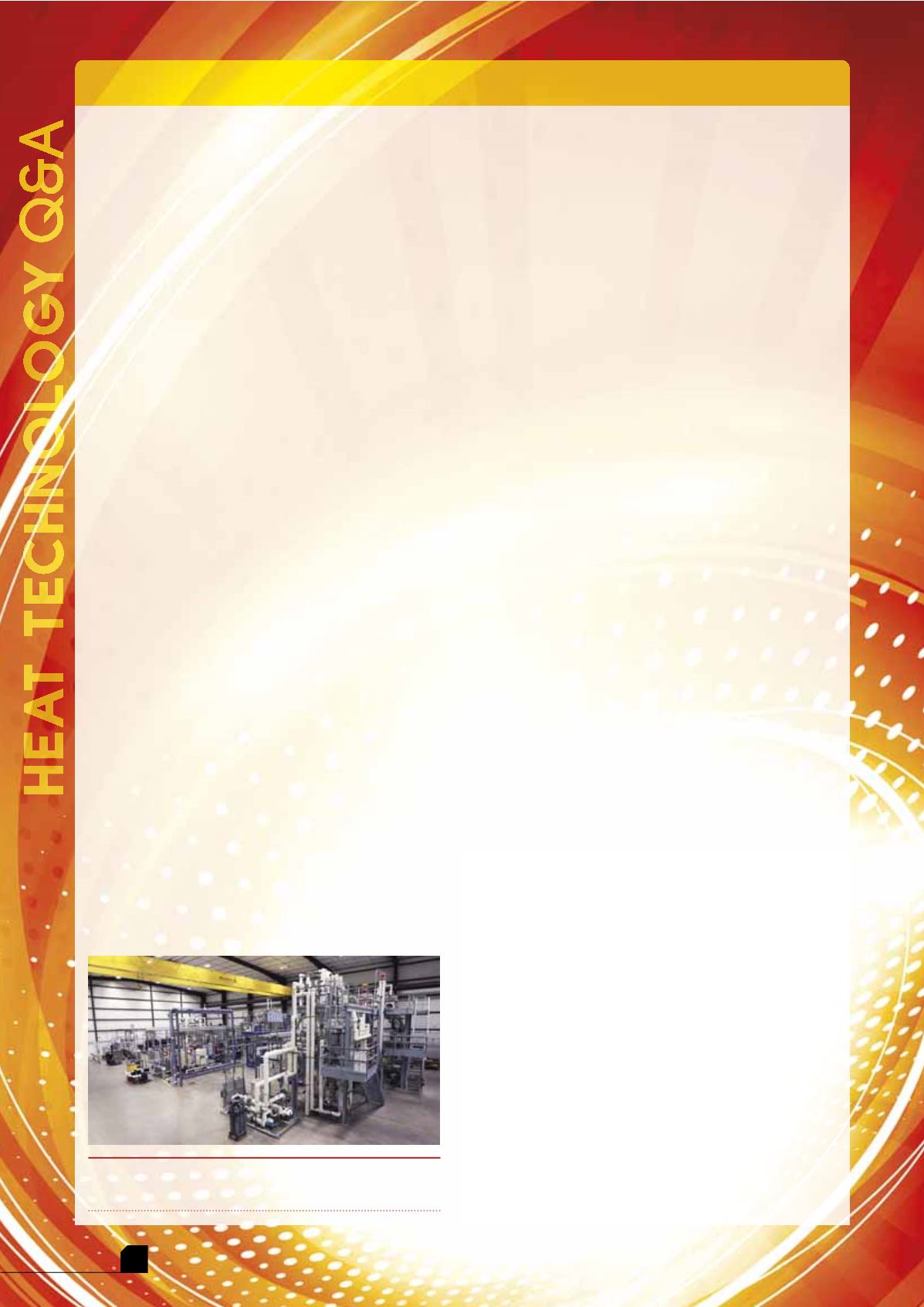
March
2017
HYDROCARBON
ENGINEERING
148
HEAT TECHNOLOGY
TOM LESTINA, BLAZO LJUBICIC & SIMON PUGH, HTRI, USA
Q
Why is heat technology so crucial to downstream
process plant operations?
The efficient, safe and controllable transfer of heat energy is
crucial to the effective conversion of raw natural resources
to usable products. For example, the distillation process in
oil refineries is heavily energy intensive, but good energy
efficiency can be achieved through good design and
operation of heat exchangers and heat exchanger networks.
Poorly designed heat exchangers can lead to significant
losses in energy and production when exchangers are offline
for maintenance and cleaning.
Q
What are the main applications for your company’s
heat technologies/equipment within the
downstream industry, and how do they assist in these
applications?
For over 50 years, HTRI has provided expertise in the field
of process heat transfer and development of software tools
for practicing engineers to use for the design, monitoring
and troubleshooting of various types of heat exchangers.
Our software is backed by meaningful, practical, and cost
effective research programmes, allowing members of the
HTRI consortium to benefit from better equipment designs,
longer equipment life cycles, and more efficient plant
operations. HTRI allows member companies to keep
up-to-date on current technologies at a fraction of the cost
of maintaining a similar in-house operation. When specific
problems occur, our members contact the HTRI technical
support team and proprietary contracts group for
assistance.
Our experienced proprietary contracts staff help
address heat exchanger issues in the areas of consulting
(exchanger design review, problem troubleshooting, and
fouling management), testing (equipment performance
evaluation and process measurement), and custom
software solutions (individualised interfaces with HTRI
X
changer Suite®
and in-house software).
Q
In what ways can heat technology help to improve
energy efficiency and reduce emissions at process
plants?
Efficient management of heat transfer is the cornerstone of
maximising process efficiency and reducing emissions.
Foremost in ensuring adequate process efficiency is the
adequate design of the heat exchangers. Design mistakes
must be avoided or corrected; configurations that optimise
the temperature profile and mitigate fouling should be used,
and adequate (but not excessive) design margins need to be
applied. In addition, plant personnel should monitor the
performance of key heat exchangers to ensure degradation is
corrected in a timely manner.
Q
How have R&D methods evolved over the past
10 years in relation to downstream heat technology?
The latest generation of petrochemical plants and energy
conversion processes require the transfer of a large amount
of heat, either as a primary energy source or as a secondary
process. Enhanced heat transfer (increased heat fluxes with
decreased temperature difference) or high heat transfer
coefficients and low pressure losses remain the key driving
forces for process heat transfer advancement. The following
advantages have opened entirely new physical domains for
heat transfer research:
Continued advancements in material science.
Faster computers.
Increased availability of sensors.
The ability to transfer and process huge amounts of
data.
Long operating life, reduction in scale, and lower
equipment cost.
As a consequence, HTRI research is focused on the
development of tools for the design and operation of
heat transfer equipment that supports the accurate,
controlled, reliable, and economical transfer of heat in
modern process plants.
Q
Explain how new heat equipment or technology is
tested at your company.
A number of pilot plant rigs at our Research & Technology
Center in Navasota, Texas, US, allow HTRI to test prototype
heat transfer equipment. These tests include acceptance
tests of full size units or proof-of-concept tests of
partial-sized test sections. The 'tested at HTRI' results
establish credibility and validate performance claims of
new heat transfer surfaces and exchanger types. We have
the testing apparatus for a variety of mechanisms, including
single phase, boiling, condensation, and fouling with a
variety of hydrocarbon test fluids and mixtures.
Q
Where do you see the heat technology market in
10 years?
Changes in process heat transfer practices tend to be
evolutionary rather than revolutionary. We expect trends
currently underway to continue. These include the use of
plant data (i.e. analytics) to optimise maintenance and
operations of heat exchangers, adoption of new materials
to mitigate corrosion and fouling, and implementation of
enhanced heat transfer surfaces to increase heat transfer,
reduce pressure drop, and increase process throughput.
With energy costs rising, operators will be less tolerant of
degraded performance, so the demand for troubleshooting
skills will continue to increase.
Bay of test rigs at HTRI Research & Technology
Center.








